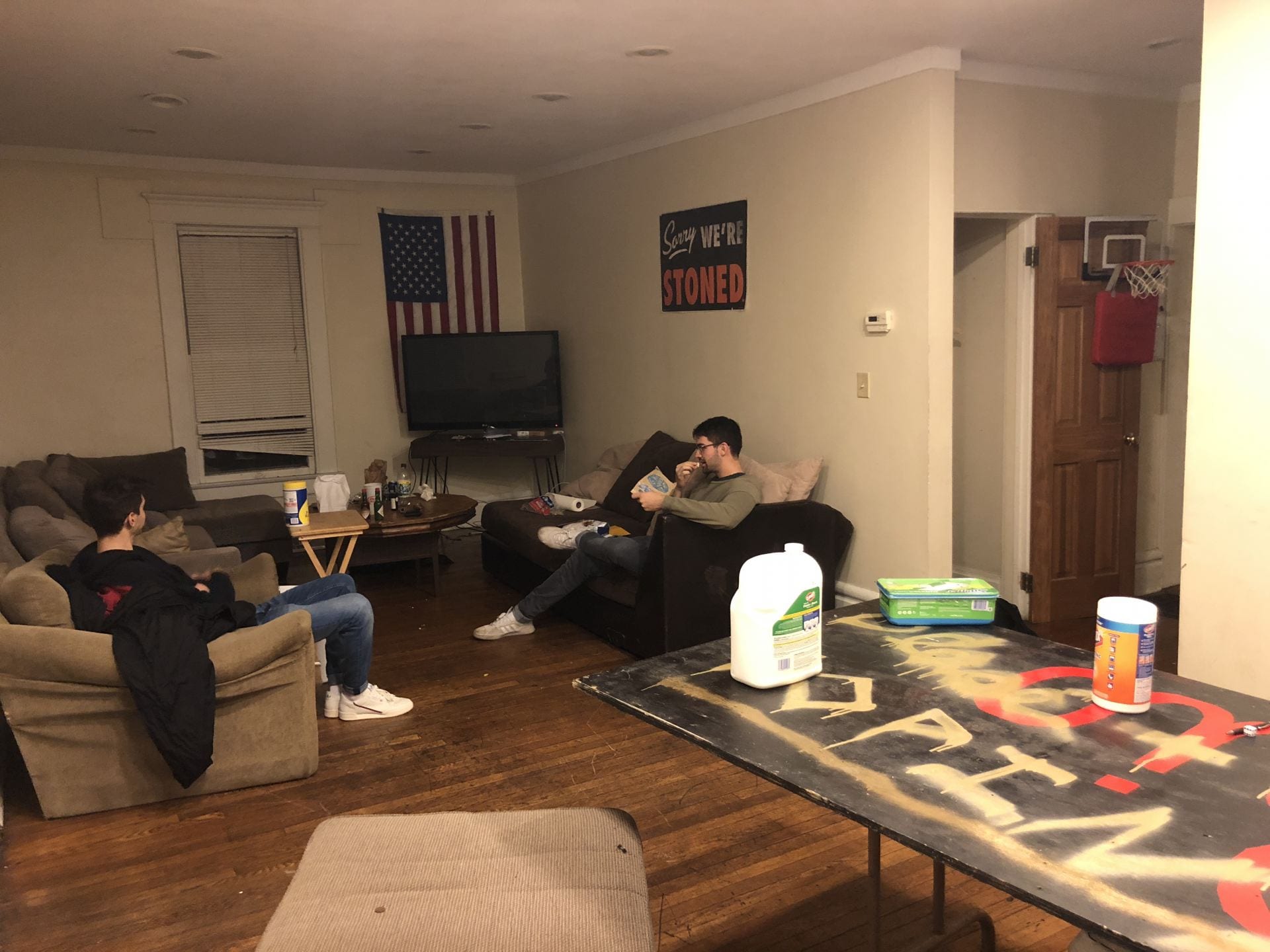
A typical male off-campus house is a place only the bravest can call home. Credit: Lily Maslia | Lantern Reporter
Your shoes stick to the floor. It makes a cringe-worthy peeling sound as the back of your shoe dislocates from your heel. You are not in a movie theater, nor are you at a concert arena. You are in an off-campus house inhabited by college men.
The interior furnishing is sparse. In what is typically called a foyer is a lonely couch, slightly angled away from the wall, with faded retro fabric scantily tarnished by cigarette burns. The couch, ornate with lacerations of unidentifiable liquid spills, faces a high-definition flat-screen television, a stark deviation from the general unpleasantry of the house.
A pleather recliner, commonly referred to as “the best seat in the house,” also faces the television, but looks slightly more sanitary than the couch. Upon hesitantly taking a seat in the crusty La-Z-Boy, you hear a startling crack, a discomforting reminder of the general safety hazard that is this off-campus residence.
Posters are the window to the soul, you think, as you take in the poor excuses for wall decor. A poster with the top left corner flopping downward calls your attention. Hanging haphazardly above the abhorrent couch is a black-and-white depiction of John Belushi clothed in a crew neck that reads, “COLLEGE.”
The residents’ appreciation of 1970s film impresses you, as your eyes move to perhaps the largest contribution to the decor. Above the television is a 3-by-5-foot red, white and blue flag; emblazoned in bold letters is “SATURDAYS ARE FOR THE BOYS,” a broad statement, sure, but it must hold some sentimental value.
What was most likely intended to be a dining room is a large space occupied by a half-size pingpong table, an avant-garde furnishing choice, but concerning nonetheless. The questionable dining table is not accompanied by chairs, but rather an assortment of empty red Solo cups littered across the floor. The amount of beverage apparatuses and eating supplies is concerning, because you see no traces of culinary utensils.
The kitchen does not provide any asylum from the utter crimes against humanity presented upon the entrance. You marvel at the plethora of empty liquor bottles that line the top of the cabinets. The bottles, enough to fuel a small village, vary greatly in brand, ranging from the “practical” Kamchatka to “top-tier” Ciroc, which, you learn, is reserved for special occasions.
The kitchen supplies are few and far between. The Brita pitcher, a college staple, is present, though it is both empty and missing the filter. Leading up to the sink is a line of rent-free tenants: ants. The ants, you are told, “aren’t that bad,” and “you get used to ‘em.” With empty pizza boxes strewn about and an unsourced aroma wafting from the sink, the kitchen has proved itself worthy of a notice from Columbus Public Health.
As you prepare to depart from this human-rights violation of a house, a beacon of hope catches your eye. A dry erase board hangs on the wall. Scribbled in hieroglyph-like handwriting are the remnants of what might have once been a chore chart. Perhaps, you think, these men aren’t heathens at all. Perhaps there were, at some point, some attempts at methodical operations in this abysmal environment.
Upon closer inspection, you realize this is no chore chart, but instead the lyrics to a song titled “Mo Bamba.”
Horrified, you exit the house as swiftly as possible, not even looking back at your fallen shoe, captured by the thin layer of stickery of the living room floor, a casualty in your most treacherous tour in navigating what is truly Ohio State’s biggest threat to humanity: male-inhabited college houses.


